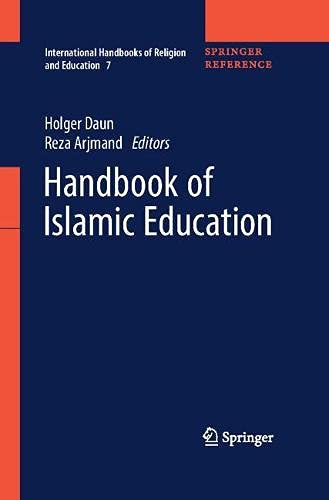آموزش اسلامی در هلند
Islamic Education in the Netherlands
- اینا تر آوست - کاک بکر
- Ina ter Avest - Cok Bakker
- چکیده
The arrival of so-called guest workers after the Second World War (in the 1960s and 1970s), in particular the arrival of labor force coming from Turkey and Morocco, was a confrontation with another and strange religion: Islam, in a predominant Christian country. At first – in line with how they were named: “guest” workers – the Dutch population as well as the guest workers themselves were convinced of their return to their respective home countries. However, things changed, and in the 1980s the process of reunion with wife and children started, resulting in Muslim children entering the Dutch educational system. In the Netherlands education is organized in so-called pillars representing the Protestant, the Roman Catholic, and the social-humanistic worldview in, respectively, Protestant schools, Roman Catholic schools, and (neutral) state schools. As a consequence of family reunion, teachers (remarkably in all of these) in these schools in their classrooms were confronted with children from Muslim families, socialized in another religious worldview than their own and the one the school adhered to. Different models were developed to adapt to this new situation. Three models are described, in particular the model of “interreligious education.” Although great effort was done to include Muslims in some way or another in the developed new ways of denominational schools, some 25 years ago Muslim parents decided to found their own Islamic primary schools, after the recognition by the Dutch government of Islam as a stable ground for the foundation of Islamic schools. A new “pillar” was established, be it that only a small percentage of Islamic children attend Islamic primary schools. The majority is part of the population of Protestant, Roman Catholic, or state schools. All schools, be it Protestant, Roman Catholic, state, or Islamic schools, are obliged to include in their curriculum a subject that was formerly called “Geestelijke Stromingen” (religious and secular philosophies of life), to inform pupils about the main characteristics of the different worldviews as they are lived by citizens in the Netherlands. These days this subject is included in a new subject called “citizenship education,” with a focus on living together, respecting, and tolerating “the other” in a democratic society.
- مشخصات منبعشناختی
.Ter Avest, Ina, and Cok Bakker. “Islamic education in the Netherlands.” Handbook of Islamic education, Edited by Holger Daun and Arjmand Reza. Heidelberg, Springer (2018): 873-87
- ملاحظات
مولف در این مقاله که در «دستنامه آموزش اسلامی» منتشر شده، ابتدا به معرفی تاریخ حضور مسلمانان در هلند در دهههای اخیر میپردازد و سپس مدلهای آموزش دینی در مدارس در سنتهای مسیحی موجود در آن کشور را توضیح میدهد. سپس ارتباط آن با برنامههای آموزشی ارائه شده از سوی دولت برای ادغام مسلمانان در جامعه را توضیح میدهد. در پایان شماری از نهادهای اداره کننده مدارس اسلامی در آن کشور و فعالیتهای آنان در زمینه تاسیس و اداره مدارس اسلامی را تشریح میکند.
مقاله حاضر معرفی اجمالی از وضعیت مدارس اسلامی در کشور هلند است. علاوه بر آن نوعی بررسی ارتباط آموزش اسلامی با مفاهیمی مانند شهروندی، هویت، ادغام و کثرتگرایی نیز است. بنابر این در آینده در دو حوزه میتوان از این مقاله استفاده برد. از یک سو اگر خواسته باشیم آموزش اسلامی در مدارس جهان را دنبال کنیم و دوم در صورتی که در پی پدیدآوردن اثری در زمینه مفاهیم سابقالذکر باشد.
- درباره نگارنده
اینا تر آوس: پژوهشگر در گروه فلسفه و مطالعات دینی، دانشگاه اوترخت، هلند
کاک بکر: پژوهشگر در گروه فلسفه و مطالعات دینی، دانشگاه اوترخت، هلند
- کشور مورد بحث در مقاله
- مورد تایید جهت ترجمه و انتشار
- اطلس جامع شیعی /
- کتابخانه /
- مقاله /
- آموزش اسلامی در هلند
